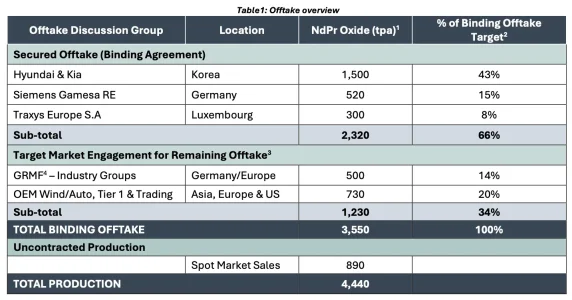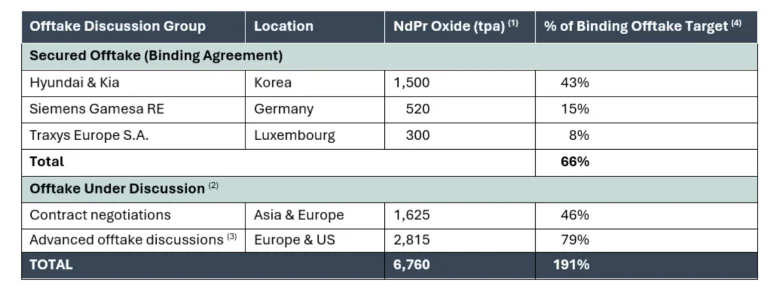https://wcsecure.weblink.com.au/pdf/ARU/02971898.pdf
Some intriguing updates in this quarter for anyone tracking ex-China HREEs and project readiness:
HREE in Waste Streams - Potentially More Revenue:
Arafura is reviving the opportunity to recover Dy/Tb from its waste liquor streams, long overlooked in the DFS:
Radiation Plan Approved - Doubters Take Note
For those who questioned licensing progress:
Cash Runway Holding Steady
Lots of people talking crap on HotCopper on this topic. And ARU management have stuck to what they said in March 2025....
Lets see what else is said tmrw at the meeting.
I'm looking for management doing some buying on market. Their blackout period has finished now.
Some intriguing updates in this quarter for anyone tracking ex-China HREEs and project readiness:
HREE in Waste Streams - Potentially More Revenue:
Arafura is reviving the opportunity to recover Dy/Tb from its waste liquor streams, long overlooked in the DFS:
Per the 2022 DFS, HREE output was ~474 tpa. This new work could meaningfully lift recovery of dysprosium and terbium, especially relevant given:“A significant portion of the SEG/HRE... are not currently recovered into final products and are contained in the waste liquor from acid purification… The Company has decided to advance this recovery opportunity and is currently progressing an initial program of test work with a local laboratory.”
“Recent China export restrictions on heavy rare earths have increased the focus on the strategic importance of Dy and Tb.”
Radiation Plan Approved - Doubters Take Note
For those who questioned licensing progress:
This clears another regulatory hurdle and adds confidence to the project’s construction-readiness.“Subsequent to the end of the quarter on 11 July 2025, Arafura received confirmation that the RPRWMP had been approved by the delegate of the Minister for the Environment and Water.”
Cash Runway Holding Steady
Lots of people talking crap on HotCopper on this topic. And ARU management have stuck to what they said in March 2025....
Lots of people with lots of agendas on HotCopper. Notice how they don't dare come comment on here?“The Company continues to maintain financial runway through to at least the first quarter of 2026 calendar year.”
Lets see what else is said tmrw at the meeting.
I'm looking for management doing some buying on market. Their blackout period has finished now.

